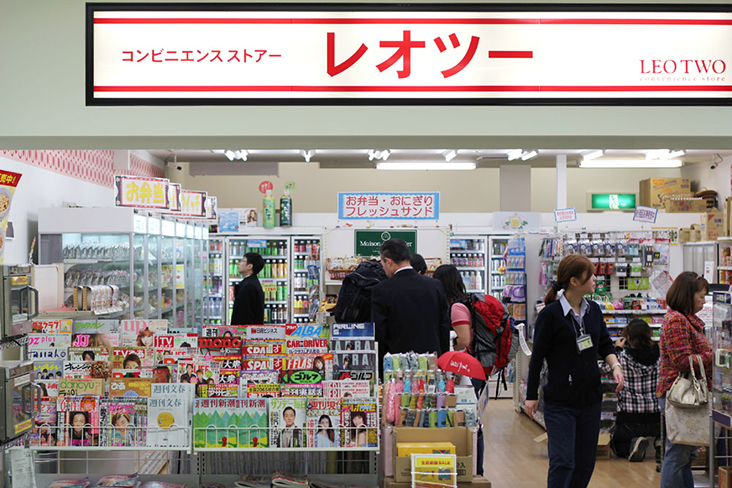TOKYO, Jan 26 — Dining out in Tokyo can be an expensive affair. The Japanese capital has one of the highest costs of living in the world, after all.
A bowl of ramen with the frills (slices of chashu, seasoned egg and nori seaweed) would typically set you back 1,000 yen (RM38). An elegant, multi-course kaiseki meal is easily 20 to 30 times that.
If you’re travelling on a budget, however, the cost of that bowl of ramen would leave you with nothing left for other meals. (A truly scary notion when there’s delicious food wherever you turn in Tokyo.)

The secret to eating well in Tokyo without burning a hole in your wallet? Konbiniensu sutoa or convenience stores where most items cost only a few hundred yen or less.
More commonly known as konbinis, these are open 24 hours a day, just like similar stores elsewhere around the world.
The difference lies in the quality of its products and services; Momofuku’s David Chang famously raved about the egg salad you can get from a konbini.
In 1974, Japan had about a thousand konbinis. Today that has risen to over 50,000 stores!
The biggest names are 7-Eleven, Lawson and Family Mart. They’re everywhere so you’ll find one almost around every corner. Other konbinis include Circle K Sunkus, Daily Yamazaki, Mini Stop and Seicomart.

You can assemble an entire picnic from foods sourced solely from a konbini. Start light with a traditional snack of onigiri or Japanese rice balls. These come in both round and triangular shapes, wrapped with nori seaweed, and filled with different ingredients such as tuna mayonnaise, mentaiko (spicy, cured cod roe) and natto (fermented soy beans).
For a more complete meal, bentos or lunch boxes (though these can be eaten at any time of day or night) are a lifesaver. Some are very basic: a katsudon or deep-fried pork cutlet atop steamed rice, for example, is pretty straightforward. Others can be a complete meal in miniature: strips of marinated beef, half a hard-boiled egg, pickles, a potato salad, rice or pasta (sometimes both), and packets of condiments such as Japanese mustard, Kewpie mayonnaise, teriyaki sauce and wasabi.
When the weather gets chilly (basically any month outside of summer), every konbini will have heated pots of oden at the counter. This is the ultimate comfort food for winter: a selection of boiled daikon radish, tofu, hard-boiled eggs and other ingredients in a bowl of hot dashi broth.
As mentioned before, yoshoku-crazed Tokyoites love Japanese curry. Another way to enjoy Japanese curry is kare-pan where the meat-and-gravy mixture is conveniently encased in bread dough that is fried till crispy.

Other delightful bites include tamagosando (egg salad sandwiches), crumbly cake doughnuts and crunchy korokke (croquettes). My favourite? A tiny pot of caramel crème brûlée.
Everything is incredibly fresh: some food items are delivered five times a day! However, the packaged foodstuffs can be a feast waiting to happen too. There is junk food galore — all manner of candies, chocolates and chips in a rainbow of flavours.
Wasabi and beef flavoured potato chips, anyone? Or how about a salt and watermelon flavoured Kit Kat?
Remember how a bowl of noodles at a proper sit-down ramen-ya would cost 1,000 yen? Japan is also the land of instant noodles; these cost only 100 to 200 yen (RM3.80-7.50) at a neighbourhood konbini.
Better yet, they come in hundreds of flavours though basically there are two types — ramen (noodle soup) and yakisoba (pan-fried noodles).

Popular ramen chains such as Ippudo and Ichiran Ramen have their own lines of instant noodles which can sell out faster than konbini staff can restock them!
Here’s a tip: the larger the packaging, the better the quality of the noodles within. Another tip, if you don’t read Japanese, is to look for pictures of the ramen chef which usually means it’s a limited edition from a popular ramen-ya.
One caveat: There’s really no need to intentionally buy drinks from the konbini unless there’s a specific beverage you like. There are vending machines offering cold and hot drinks such as green tea and coffee, milk and alcoholic beverages everywhere, even in small back alleys. (Japan is a very safe country; the lack of vandalism explains the abundance of machines.)
Konbinis aren’t just an easy place to get food and drinks any hour of the day. Beyond standard wares such as cosmetics, umbrellas, newspapers and magazines, many stores in Tokyo also offer services. These include photocopying and fax, pre-paid cards for mobile phones, ticket sales for concerts and theme parks, ATMs for cash (an absolute must in Japan where most businesses still prefer print money to credit cards) and even lottery tickets!
If you recall from our earlier instalment, the Japanese love to queue. For visitors though, this can be a bit tiresome after the hour or so waiting in line to enter a restaurant. Konbinis are simply faster when you’re famished (they have queues too, naturally, but these move quickly).

Come to think of it, there’s no better snapshot of Tokyo’s diverse food offerings than what you can find in a konbini — and of the city’s well-polished efficiency. Make dropping by a konbini part of your Tokyo travel memories.
This is the final part in a five-part series about travelling to Tokyo. Read the first four parts here, here, here and here.






















